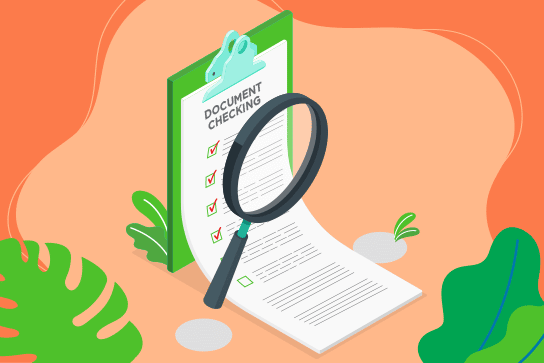LISTEN AUDIO
Last Updated on April 7, 2023 by Ozlinks Education
This unit SITXFSA002 describes the performance outcomes, skills and knowledge required to handle food safely during the storage, preparation, display, service, and disposal of food. It requires the ability to follow predetermined procedures as outlined in a food safety program.
The unit applies to all organisations with permanent or temporary kitchen premises or smaller food preparation areas. This includes restaurants, cafes, clubs, and hotels; tour operators; attractions; function, event, exhibition, and conference catering; educational institutions; aged care facilities; correctional centres; hospitals; defence forces; cafeterias, kiosks, canteens, and fast-food outlets; residential catering; in-flight and other transport catering.
Safe food handling practices are based on an organisation’s individual food safety program. The program would normally be based on the hazard analysis and critical control points (HACCP) method, but this unit can apply to other food safety systems.
It applies to food handlers who directly handle food during the course of their daily work activities. This includes cooks, chefs, caterers, kitchen hands and food and beverage attendants.
Food handlers must comply with the requirements contained within the Australia New Zealand Food Standards Code.
In some States and Territories businesses are required to designate a food safety supervisor who is required to be certified as competent in this unit through a registered training organisation.
Food safety legislative and knowledge requirements may differ across borders. Those developing training to support this unit must consult the relevant state or territory food safety authority to determine any accreditation arrangements for courses, trainers, and assessors.
Elements and Performance Criteria.
Elements describe the essential outcomes. Performance criteria describe the performance needed to demonstrate achievement of the element.
1. Follow food safety program.
1.1 Access and use relevant information from organisational food safety program.
1.2 Follow policies and procedures in food safety program.
1.3 Control food hazards at critical control points.
1.4 Complete food safety monitoring processes and complete documents as required.
1.5 Identify and report non-conforming practices.
2. Store food safely.
2.1 Select food storage conditions for specific food type.
2.2 Store food in environmental conditions that protect against contamination and maximise freshness, quality, and appearance.
2.3 Store food at controlled temperatures and ensure that frozen items remain frozen during storage.
3. Prepare food safely.
3.1 Use cooling and heating processes that support microbiological safety of food.
3.2 Monitor food temperature during preparation using required temperature measuring device to achieve microbiological safety.
3.3 Ensure safety of food prepared, served, and sold to customers.
4. Provide safe single use items.
4.1 Store, display and provide single use items so they are protected from damage and contamination.
4.2 Follow instructions for items intended for single use.
5. Maintain a clean environment.
5.1 Clean and sanitise equipment, surfaces, and utensils.
5.2 Use appropriate containers and prevent accumulation of garbage and recycled matter.
5.3 Identify and report cleaning, sanitising, and maintenance requirements.
5.4 Dispose of or report chipped, broken, or cracked eating, drinking or food handling utensils.
5.5 Take measures within scope of responsibility to ensure food handling areas are free from animals and pests and report incidents of animal or pest infestation.
6. Dispose of food safely.
6.1 Mark and separate from other foodstuffs any food identified for disposal until disposal is complete.
6.2 Dispose of food promptly to avoid cross-contamination.
Assessment Requirements
Performance Evidence
Evidence of the ability to complete tasks outlined in elements and performance criteria of this unit in the context of the job role, and:
- demonstrate use of safe food handling practices in food handling work functions on at least three occasions
- demonstrate the correct methods of controlling food hazards at each of the following critical control points:
- receiving
- storing
- preparing
- processing
- displaying and/or serving
- packaging
- transporting
Knowledge Evidence
Demonstrated knowledge required to complete the tasks outlined in elements and performance criteria of this unit:
- key features of commonwealth, state or territory and local food safety compliance requirements as they impact workers at an operational level:
- contents of national codes and standards that underpin regulatory requirements.
- reasons for food safety programs and what they must contain.
- local government food safety regulations and inspection regimes.
- consequences of failure to observe food safety policies and procedures.
- meaning of contaminant, contamination and potentially hazardous foods as defined by the Australia New Zealand Food Standards Code
- hazard analysis and critical control points (HACCP) or other food safety system principles, procedures, and processes as they apply to operations and different food types:
- critical control points for the specific food production system and the predetermined methods of control, especially time and temperature controls used in the receiving, storing, preparing, processing, displaying, serving, packaging, transporting, and disposing of food.
- main types of safety hazards and contamination.
- conditions for development of microbiological contamination.
- environmental conditions and, temperature controls, for storage.
- temperature danger zone and the two-hour and four-hour rule.
- contents of organisational food safety program, especially procedures, associated requirements, and monitoring documents
- food safety monitoring techniques:
- bacterial swabs and counts.
- checking and recording that food is stored in appropriate timeframes.
- chemical tests.
- monitoring and recording food temperatures using a temperature measuring device accurate to plus or minus one degree Celsius.
- monitoring and recording temperature of cold and hot storage equipment.
- visually examining food for quality review.
- methods to ensure the safety of food served and sold to customers:
- Packaging control: using packaging materials suited to foods and monitoring of packaging damage.
- protective barriers.
- temperature control.
- supervision of food displays.
- utensil control.
- providing separate serving utensils for each dish.
- safe food handling practices for the following different food types:
- dairy
- dried goods.
- eggs
- frozen goods.
- fruit and vegetables.
- meat and fish.
- equipment operating procedures, especially how to calibrate, use and clean a temperature probe and how to identify faults.
- choice and application of cleaning, sanitising and pest control equipment and materials.
- cleaning, sanitizing, and maintenance requirements relevant to food preparation and storage:
- cleaning: dirt, food waste, grease, pest waste removal.
- sanitising: eating and drinking utensils, food contact surfaces.
- maintenance: recalibrating measurement and temperature controls, minor faults.
- high risk customer groups:
- children or babies.
- pregnant women.
- aged persons.
- people with immune deficiencies or allergies
- unwell persons.
Assessment
Assessment for this subject will be covered the following areas:
- fixtures:
- commercial grade work benches.
- refrigeration unit.
- sink.
- storage facilities.
- small equipment:
- assorted pots and pans.
- containers for hot and cold storage.
- crockery.
- cutting boards.
- food handler gloves.
- knives.
- packaging materials.
- receptacles for presentation and display purposes
- small utensils: tongs, serving utensils.
- temperature monitoring device.
- appropriate facilities for handwashing:
- designated hand washing sink.
- antiseptic liquid soap.
- single use towels.
- warm running water.




